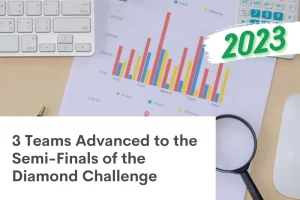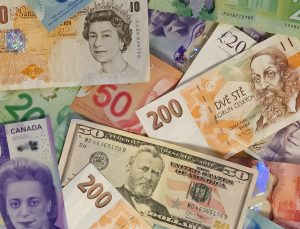LASTEST UPDATE ▪️ COMPETITION INFORMATION
National Economics Challenge Winners Are Announced!
National Economics Challenge
The National Economics Challenge is hosted by the Council for Economic Education, a long-standing organization committed to equipping K-12 students with knowledge and tools of personal finance and economics. National Economics Challenge is the only annual economic competition for high school students. The competition tests students on their knowledge of the world economy, specifically microeconomics, macroeconomics, and international and current events. In 2019, more than 10,000 high school students participated in 45 states nationwide.
Interested in the competition?

Competition Overview
High school students
Eligibility
Free
Entry fee
Varies
Submission deadline
April 21-24, 2025
National Semi-final
May 28-30, 2025
National Finals
Competition Details
1. Eligibility
- Students must be enrolled for credit in a qualifying public high school, private high school, or home-based high school course at some time during the current academic year.
- Students who have taken or are taking economics courses for college credit from a post-secondary instructor are not eligible to compete. Students who have or are currently taking economics courses for college credit from high school level instructors are eligible to compete in the Adam Smith division.
- Students who have taken more than one course of economics at any time must compete in the Adam Smith Division.
- No student is permitted to compete in the David Ricardo Division more than one year.
- Any returning student who has already participated in the National Economics ChallengeSM (at the state level or higher) must compete in the Adam Smith Division in subsequent years, regardless of previous or current coursework.
- Home-schooled students must compete in the Adam Smith Division
2. Team Division
There are two divisions: David Ricardo and Adam Smith. The David Ricardo Division includes teams of students currently or previously enrolled in one general economics course or courses that include introductory economic concepts. The Adam Smith Division includes teams of students currently or previously enrolled in Advanced Placement, International Baccalaureate, honors, two courses, or any other advanced courses in economics. Teams shall be comprised of no more than four members.
3. Competition format
Three to four high school students form a group to participate in one of the two divisions. Within each division, there will be 3 rounds of competition. The winning team from each state moves on to the Online National Semi-Finals to compete for their spot in the National Finals.
4. Prizes
At the in-person National Finals, teams compete for the national championship in their division as well as cash prizes for each team member, plus one teacher-coach: 1st place: $1,000 | 2nd place: $500 | 3rd place: $250 | 4th place: $200.
Registration Deadlines by states (2025)
| States | Registration Deadlines |
|---|---|
| Alabama | March 14 |
| Alaska | April 10 |
| Arizona | March 17-28, 2025 |
| Arkansas | Competition Date: March 14, 2025 |
| California | March 3-14 |
| Colorado | January 1 – April 10 |
| Connecticut | January 1 – March 3 |
| Delaware | January 1 – April 10 |
| District of Columbia | January 1 – April 10 |
| Florida | January 1 -April 10 |
| Georgia | March 10-21 |
| Hawaii | April 2 |
| Idaho | January 1 -April 10 |
| Illinois | March 3-13 |
| Indiana | November 4, 2024 – March 7, 2025 |
| Iowa | Jan 1 – March 14 |
| Kansas | February 12 – March 8 |
| Kentucky | January 1 – April 10 |
| Lousiana | January 1 – April 10 |
| Maine | January 1 – April 10 |
| Maryland | March 17 – March 21 |
| Massachusetts | January 1 – April 11 |
| Michigan | April 9 |
| Minnesota | January 1 – February 21 |
| Mississippi | March 3-14 |
| Missouri | March 16 – April 4 |
| Montana | January 6 – April 11 |
| Nebraska | March 3-April 4 |
| Nevada | January 1 – April 10 |
| New Hampshire | January 1 – April 10 |
| New Jersey | January 2 – April 4 |
| New Mexico | January 1 – April 10 |
| New York | January 1 – March 19 |
| North Carolina | January 31 – March 21 |
| North Dakota | January 1 – April 10 |
| Ohio | February 19 |
| Oklahoma | January 1 – April 10 |
| Oregon | March 1 – March 30 |
| Pennsylvania | March 3 – March 28 |
| Rhode Island | January 19 – April 11 |
| South Carolina | January 21 – March 14 |
| South Dakota | January 1 – April 10 |
| Tennessee | March 1 – April 12 |
| Texas | January 1 – April 10 |
| Utah | January 1 – April 10 |
| Vermont | January 1 – April 10 |
| Virginia | Online testing: March 1 – March 31 |
| Washington | February 1- April 1 |
| West Virginia | January 1 – April 10 |
| Wisconsin | April 1 |
| Wyoming | January 1 – April 10 |
How to Study the National Economics Challenge?
The study material collection created by CEE covers various topics within economics, from microeconomics like how you pay for college to macroeconomics like globalization. The lessons normally last around 30-60 minutes, and there are 42 lessons in total.
Below are the sample tests provided by CEE to test your skill and knowledge in economics. Even though the test is 10 years old, students can use this test as a foundational test for any knowledge gaps and potential areas of improvement. In addition to the archived test, students can also register an account for practice tests on Ready Assessment.
Competition Process
The process begins with state-level competitions. Each state sets its own rules for competitions. For example, the 2022 state-level competition in New York consists of 30 questions that must be answered in 35 minutes. Each student works individually. The team composite score is the sum of the top 3 scores on each team.
The winning team from each state moves on to the National Semi-Finals. The top eight scoring teams will compete at the National Finals. The finals include a critical thinking round and quiz bowl, where students present and answer questions from economists and financial professionals.
At the National Finals, there are three rounds of competition within each division: Round 1 – Microeconomics, Round 2 – Macroeconomics, and Round 3 – International Economics and Current Events. Each round lasts 20 minutes, with 15 multiple-choice questions. Members will compete individually, and the team score in each round is the sum of the top three individual scores.
The 4th round is the Critical Thinking Round, where students work as a team to develop a solution and analysis to a current economic problem. Students will be judged on: completeness of response, financial analysis and insight, background knowledge, and presentation.
The 5th and final round of the National Finals is the Quiz bowl, where students decide one spokesperson, who will present the team’s answer to the judge’s questions on a sheet of paper. There are a total of 22 questions, with a discussion time of around 30 seconds each.












